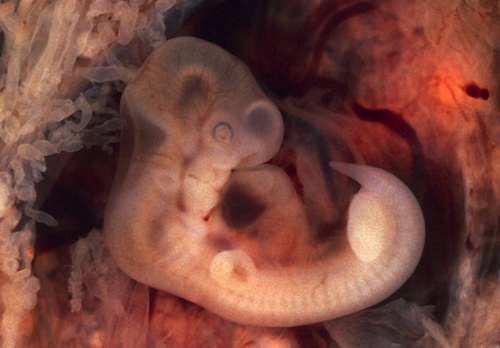Fetal alcohol syndrome is grossly under-reported: Researchers discover numbers up to 400% higher than previously thought in some regions
02/26/2018 / By Jhoanna Robinson

Around one in 20 children are prone to having fetal alcohol syndrome, new data compiled by the University of California, Berkeley, showed.
Across different regions, the rates of fetal alcohol disorders are between 13 and 400 percent higher than previous records showed. To illustrate, between 11.3 and 50 out of every 1,000 children are affected by their mother’s drinking habits.
The research teams, which received funding from the National Institute on Alcohol and Alcoholism, went to cities in four regions of the country: the Southeast, the Midwest, the Rocky Mountain region, and the Pacific Southwest. They examined a total of 6,639 first-graders from schools in each location for signs of a fetal alcohol spectrum disorder.
The lowest percentage was from one of the Midwest samples, while in one group of Rocky Mountain region students, around 50 out of 1,000 children were found to have been affected by alcohol while they were still in the womb.
“Misdiagnosis is very common, and that’s what I think this study exposed,” said American College of Obstetricians and Gynecologists (ACOG) president Dr. Haywood Brown, noting that the behavioral symptoms of fetal alcohol spectrum disorder are often confused with the symptoms of attention deficit disorder.
Fetal alcohol disorders are developmental delays and facial abnormalities that can occur in the children of the estimated 10 percent of women in the United States who drank alcohol during their pregnancies, according to the study. These symptoms were discovered as being associated with alcohol exposure in 1973.
100% organic essential oil sets now available for your home and personal care, including Rosemary, Oregano, Eucalyptus, Tea Tree, Clary Sage and more, all 100% organic and laboratory tested for safety. A multitude of uses, from stress reduction to topical first aid. See the complete listing here, and help support this news site.
Children with fetal alcohol syndrome have a thin upper lip and a flattened area above it, a small chin, and a short and flattened nose. (Related: Alcohol consumption during pregnancy found to have transgenerational damaging effect on developing brains.)
Experts at ACOG and the Centers for Disease Control and Prevention (CDC) said that there is no safe amount of alcohol for pregnant women to drink.
“Alcohol is teratogenic, menaing it causes [disorders to the] central nervous system, and that is well known. But as is true of all teratogens, they do not affect everybody,” Dr. Brown said. For instance, how vulnerable a woman’s baby will be to the effects of alcohol during the gestation period depends on how she metabolizes alcohol.
This means that while some women can binge drink and have their baby unaffected by that activity, other women can drink just once, early in her pregnancy while her baby’s face and brain are still developing, then stop until delivery and still have her baby manifesting physical and developmental abnormalities.
Another study that was conducted last year and was published in JAMA Psychiatry showed that the number of women having four or more drinks in a day on a weekly basis has increased by a staggering 58 percent in recent years.
“Logically, if you see more women drinking, more women will have been drinking when they get pregnant. People equate alcohol with bourbon and Scotch and they forget about beer and wine, which have alcohol in them. That’s the thing that people need to understand: alcohol is alcohol, so put down that glass of wine,” Dr. Brown said.
According to the CDC, 0.2 to 1.5 babies for every 1,000 live births in certain areas of the country suffer from fetal alcohol spectrum disorder. The number can go as high as two to five per 100 schoolchildren, or between two and five percent of the population.
Among the other conditions that children with fetal alcohol spectrum disorder have aside from the ones that were already mentioned are:
- Difficulty with attention
- Difficulty in school (especially with math)
- Intellectual disability or low IQ
- Small head size
- Shorter-than-average height
- Low body weight
- Poor coordination
- Hyperactive behavior
- Poor memory
- Learning disabilities
- Speech and language delays
- Poor reasoning and judgment skills
- Sleep and sucking problems as a baby
- Vision or hearing problems
- Problems with the heart, kidneys, or bones
Sources include:
Tagged Under: addiction, Alcohol, alcohol consumption, developmental abnormalities, fetal alcohol syndrome, gestation period, pregnancy, prenatal nutrition, research, substance abuse




















